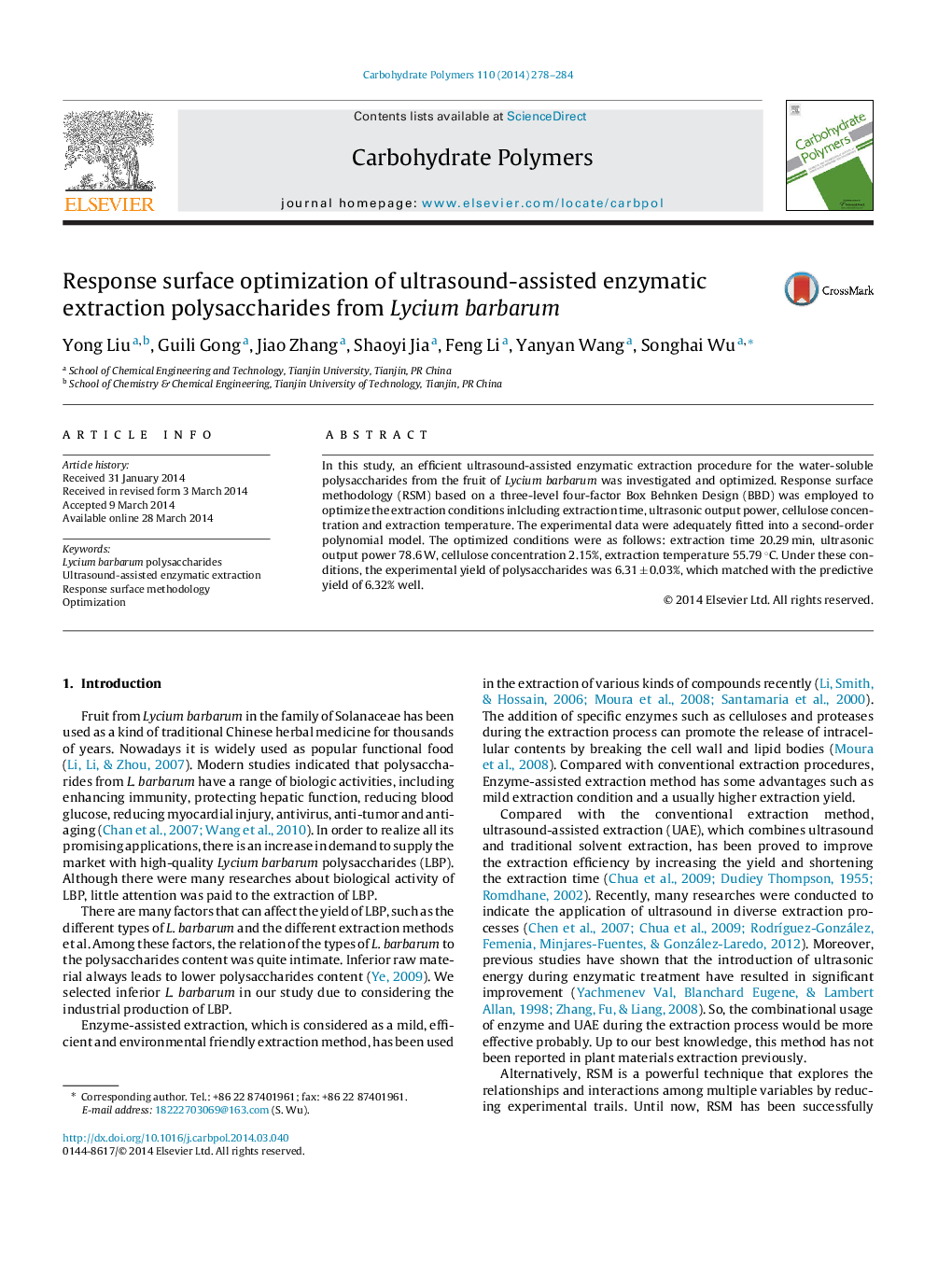| Article ID | Journal | Published Year | Pages | File Type |
|---|---|---|---|---|
| 1385833 | Carbohydrate Polymers | 2014 | 7 Pages |
•An efficient ultrasound-assisted enzymatic extraction procedure used to extract Lycium barbarum polysaccharide was optimized.•All the ranges of main factors related to the yield of polysaccharide were based on the results of single-factor experiments.•The conditions were optimized by response surface methodology further.•The validity of the model is verified experimentally.
In this study, an efficient ultrasound-assisted enzymatic extraction procedure for the water-soluble polysaccharides from the fruit of Lycium barbarum was investigated and optimized. Response surface methodology (RSM) based on a three-level four-factor Box Behnken Design (BBD) was employed to optimize the extraction conditions inlcluding extraction time, ultrasonic output power, cellulose concentration and extraction temperature. The experimental data were adequately fitted into a second-order polynomial model. The optimized conditions were as follows: extraction time 20.29 min, ultrasonic output power 78.6 W, cellulose concentration 2.15%, extraction temperature 55.79 °C. Under these conditions, the experimental yield of polysaccharides was 6.31 ± 0.03%, which matched with the predictive yield of 6.32% well.
